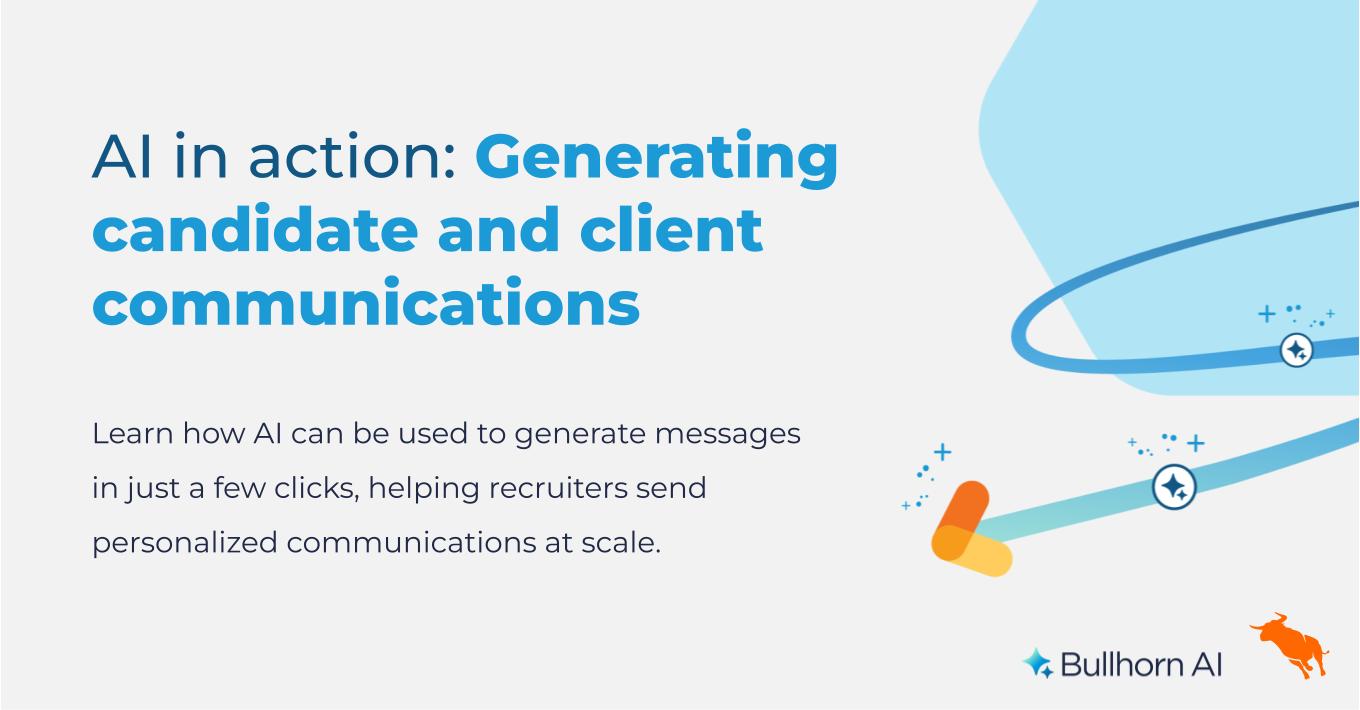4 Ways Staffing Firms Can Turn Data Into Action

Growth is a magic word for businesses, but it can come with complications, specifically when it comes to data. Business growth means more employees, more recruiters, more activity, and more data to track! With all of that data, accessing and utilizing the data can be difficult, and making sense of the bigger picture can feel impossible. But getting the most out of your data is actually quite achievable with the right tools and the right approach. With that in mind, here are four tips for using your data to make an impact.
Improve Resource and Time Allocations with Analytics
Time and budget are the two most precious resources to any business, and analytics allow you to make the best use of them. For maximum operational efficiency, run reports that enable you to reallocate resources to where they will be most valuable.
This is especially vital when tracking employee performance and business health metrics. Which accounts need more attention? Which accounts have the most activity? You can also reallocate budget to accounts based on profitability. Reallocate dollars from accounts with underperforming margins to those with the healthiest margins. Adjusting targets based on your strengths is a reliable and effective way to boost ROI. Smart data-based business strategy leads to decreased costs and increased revenue.
Reallocation is equally important when it comes to candidate sourcing. For example, monitor which sources you invest in and which sources result in the most revenue and placements… or least revenue and placements. Track submissions by location and job type to get a better understanding of future needs. Understanding your candidate sourcing data enables you to become far more efficient at sourcing the right candidates for the right jobs.
Stop Waiting!
Why wait for reports on a weekly, monthly, or quarterly basis if you can implement a positive change immediately? If it’s the middle of the month, it can be tempting to wait for the month to end to analyze data, but measuring a month of data from July 1st to August 1 is just as arbitrary as June 25th to July 25th. Waiting until the end of a week, month, or quarter also increases the likelihood you’ll be busy with other tasks.
In order to truly be efficient in your reporting, it’s essential to have a reporting solution that utilizes real-time data. Real-time data enables real-time adjustments so that your business can improve now instead of at the end of a fiscal quarter.
You can use real-time data to:
- Provide useful performance feedback to an employee NOW instead of waiting until she may already have missed her goals.
- Share insights with co-workers when the data will be most relevant to them.
- Adjust investments into accounts and activities that are underperforming or overperforming.
Lead Your Team to Success with Data-Supported Feedback
Staffing firms are now able to understand employee performance and recruiter activities at a level of detail that was previously unimaginable.
To take advantage of the information out there, utilize a reporting solution that can track the metrics that will best enable you to understand and improve employee performance.
Your reporting solution should be able to track recruiter activities and effectiveness metrics. While not an exhaustive list, these metrics are a good starting point.
- Time to fill
- Fill rate
- Submission count
- Interview count
- Placement count
- Jobs added
- Candidates added
- Clients added
Tracking these metrics (and tracking them in real-time) enables you to provide custom feedback to your team before it results in weak performance and low employee morale. You can also commend an employee for exemplary performance to encourage positive trends as soon as you detect them.
Transparent and Accessible Data is Good Data
It’s not an uncommon scenario: You run an awesome report, you diagnose a problem that is preventing greater success for your business, and…nothing happens. Analytics and reports are more useful when more members of your team have (easy) access to them.
Export your reports into a form that matters to your end-user and audience. If they prefer a PDF document to Excel, because it’s easier for them to read, provide the data in a PDF.
Consider who has easy access to the reports you generate. You may need to restrict access on a given report to select team members for a variety of reasons, but always ask yourself these two questions when generating a report.
- Are the people who will best be able to benefit from this data aware this report exists?
- Is it easy for them to access this report?
Your reports are a lot more valuable when they’re shared with team members who can benefit from them. Four reasons to share your reports:
- Get insights into the hands of the ultimate decision makers
- Use reports in executive-level presentations to get buy-in on new business investments
- Use reports with employee performance reviews to mentor and coach
- Back up your insights with the data you uncover to create a more compelling case for your recommendations
Ultimately, smarter reporting leads to gains across the board: improved operational efficiencies, stronger team morale, and informed business investments. Learn more about how Bullhorn’s new reporting suite, Canvas, can transform your reporting.









